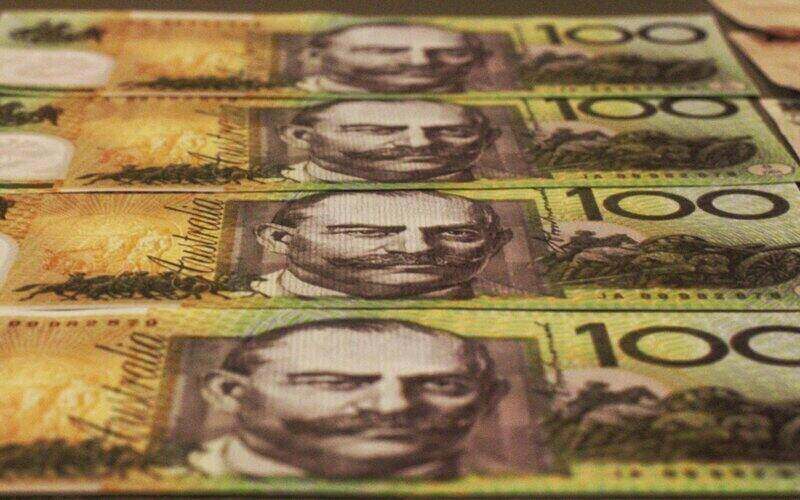Aussies are spoilt for choice when it comes to all the different methods for collecting funds transferred from overseas.
In this guide, we'll take you through the main options at your disposal for receiving money from abroad, what to look out for, and the fees you may expect to pay.
How can I receive money from overseas?
1. Bank to bank transfer
You can receive money from overseas through one bank account to another. The sender will have to initiate the transfer from their bank account through online or mobile banking. As the receiver, you need to provide details including your name, residential address, your account details (BSB, account name, account number), your bank’s name, and a SWIFT or a Bank Identifier Code (BIC) which you can request.
A SWIFT code — sometimes also called a BIC number — is used to identify banks and financial institutions globally.
These codes are used when transferring money between banks, in particular for international wire transfers or SEPA payments. Banks also use these codes to exchange messages between each other.
These types of transfers can be costly as banks typically apply their own exchange fee on top of the rate applied to your exchange rate for international money transfers. Generally, you can expect a wait time of 3-5 business days before the money lands in your account.
Here are the BIC codes for the big-four Australian banks:
| Bank Name | SWIFT/BIC Code | Brand Address Locator |
| Commonwealth Bank of Australia | CTBAAU2S | CBA Branch |
| Westpac Bank | WPACAU2S | Westpac Branch |
| ANZ Bank New Zealand Limited | ANZBNZ22 | ANZ Branch |
| National Australia Bank | NATAAU3303M | NAB Branch |
2. International money transfer service (IMT)
You can receive money from overseas directly into your bank account, using a peer to peer international money transfer facilitator like Wise or CurrencyFair. P2P transfer providers typically offer lower transaction fees and more competitive foreign exchange rates than banks.
That’s because they utilise banks in the country of transfer, so when someone sends money from Australia to you in another country, they are sending you money from their local institution. This allows them to charge as close to international exchange rates as possible.
You will need to provide your bank details so the sender can set up an account with the international money transfer facilitator and exchange the money into your desired currency. The provider will then transfer the money into your bank account.
Online money transfers usually take between 1-3 business days for the money to arrive into your bank account.
3. Paypal
Paypal allows customers to transfer between each other domestically and internationally. PayPal is a reliable transfer system but does come with fees. These fees are usually charged to the sender through PayPal’s system.
For PayPal to be a viable option, both the sender and receiver will need to be set up with a PayPal online account, and will need to provide information like a phone number, email, and bank details. Once your money arrives in your PayPal account, you'll receive a confirmation email - typically this will take 2-3 business days.
Paypal instructions:
“Log in to your account. Enter your friend's email or mobile number and an amount to send. Choose the bank account or card to use, and send your money securely. They'll receive the money into their PayPal account or a link to sign up to access it.”
4. Western Union
Western Union allows you to send and receive money internationally online through the Western Union App or by withdrawing cash at participating locations.
According to Western Union, you must bring a picture identification card to pick up money from an agent location. Depending on the country and the agent location where the receiver will pick up the money, the forms of acceptable ID may vary. In general, passports, birth certificates, and national IDs are acceptable. You will also need the payment reference number on hand.
Participating locations for receiving international transfers (such as cash) can be found on the Western Union website.
The bank information required to send a Direct to Bank Account money transfer varies by country. In general, the sender will need to know at least:
-
Your bank name.
-
Your bank code and bank account number.
-
The amount and country to which you wish to send.
What costs are associated with receiving money from overseas?
Typically, the sender incurs most of the transaction fees, however, you may also be hit with some fees as the receiver.
- Receiving fee: you may be charged a receiving fee from your bank or financial institution which is deducted from your total amount to process the foreign payment into your nominated bank account.
- Intermediary fee: international money transfers are usually sent through the SWIFT system, a network of global banks who process international payments. If the payment is averted through an intermediary bank (the middleman), they may charge their own fee which can be deducted from your total amount. In some cases, this can be paid by the sender ahead of time.
Big-four bank receiving costs
Here are receiving fees associated with international transfers from the largest banks in Australia, with information correct at the time of writing.
-
NAB: NAB charges between $15 and $35 to receive money, depending on a few factors such as: Transfers via NAB to a non-NAB account in AUD; Foreign currency transferred via NAB unconverted to another bank; or Australian Dollars sent via NAB to an offshore account.
-
ANZ: ANZ will cover the correspondent bank fee for transfers sent in a foreign currency via ANZ Internet Banking and ANZ Phone Banking for the following currencies and countries: USD to all countries; GBP to United Kingdom; NZD to New Zealand; INR to India; and EUR to all countries.
-
Westpac: There is a $12 fee for International Payments deposited directly into your Westpac bank account.
CBA is a bit more granular and consists of:
|
Transfer |
Fee |
|---|---|
|
For credit of a Commonwealth Bank Australian dollar (AUD) account (regardless of currency) |
Up to $11.00 per transfer |
|
For credit of a Commonwealth Bank Foreign Currency Account |
Up to $11.00 per transfer |
|
For credit of an AUD account at another bank |
Up to $25.00 per transfer |
|
For credit of a Foreign Currency Account at another bank |
Up to $35.00 per transfer |
Source: CBA
What factors should you consider when receiving money from overseas?
When comparing transfer options, the main factors to consider are:
-
Exchange rate -The exchange rate is the value of the AUD compared to foreign currency. This will fluctuate as the value rises and falls. For example, $1 AUD is worth $0.64 USD at the time of writing. Be sure to compare these when deciding who to transfer through. When you receive money from overseas, it’s likely you won’t receive the exact same rate as the official international exchange rate. That’s because banks add a margin to what’s called the ‘spot rate’.
-
Fees - Most international transfers will come with a service fee. These will usually be charged to the sender, but always read the terms and conditions of the institution you transfer through to avoid being hit with a surprise fee as the receiver. Some may be a set fee per transaction, while others will be based on the amount of money you are receiving.
-
Intermediary fees - Most international money transfers are delivered through the SWIFT system. This is an international network of banks that process money transfers. Through the SWIFT system a payment could be re-routed from your sender’s bank through intermediary banks, meaning all of these could charge a fee. Often these fees are deducted from your receiving funds or can be paid by the sender in advance.
-
Limits - Most banks and online transfer facilitators will have minimum and maximum transfer limits. Check before you transfer what these limits are.
-
Time - Not all transfers will be instant. Some international transfers can take days to clear both in the account you transfer from and transfer to.
-
Customer service - It’s important to consider who you transfer with and what contact and support they offer customers. If you have questions, not all transfers will have a customer service team you can contact.
-
Send/receive method - Different transactions will allow you to send and receive money in different ways. For example, Paypal is a digital transfer connected to an email or phone number, while a Western Union transfer will allow you to receive the deposit as cash or online.
-
Identifier info - Another aspect to consider is what information you need to facilitate the transaction. Paypal for example allows you to send and receive money with just an email address, whilst online transfer portals like Wise will require more information.
Frequently asked questions
How long does it take to receive money from overseas?
The general wait time you can expect for an international money transfer is between one ans five business days. It all depends on the provider, where the money is being sent to and from, the type of transfer, and also the time of transfer (e.g. weekday versus public holiday).
Which bank details are needed to receive money from abroad successfully?
To receive money from overseas, you'll need to provide the sender with the following information:
- Personal details e.g. name, residential address
- Account details e.g. BSB number, account number, name on your account
- Your bank's name and SWIFT/BIC code
Before sending the information, always double check that everything is correct to avoid causing delays, cancellation, or even sending the money to the wrong account - it can be difficult to reclaim the money.
Why haven't I received my funds yet?
If you're aware the sender transferred the money from overseas but you're still waiting to receive it, there could be a few underlying reasons why including:
- Security reasons: concerns regarding money laundering or fraud (usually for larger amounts).
- Incorrect details: one wrong number could cause a delay, cancellation, or even money being sent to the wrong account/person.
- Unavailable funds: this typically happens when a sender sets up regular transfers and doesn't end up having money to complete the transfer.
See Also: How to send money overseas
First published on June 2022
Image by Artiom Vallat via Unsplash




 Harry O'Sullivan
Harry O'Sullivan
 Harrison Astbury
Harrison Astbury

 Alex Brewster
Alex Brewster
 Rachel Horan
Rachel Horan

